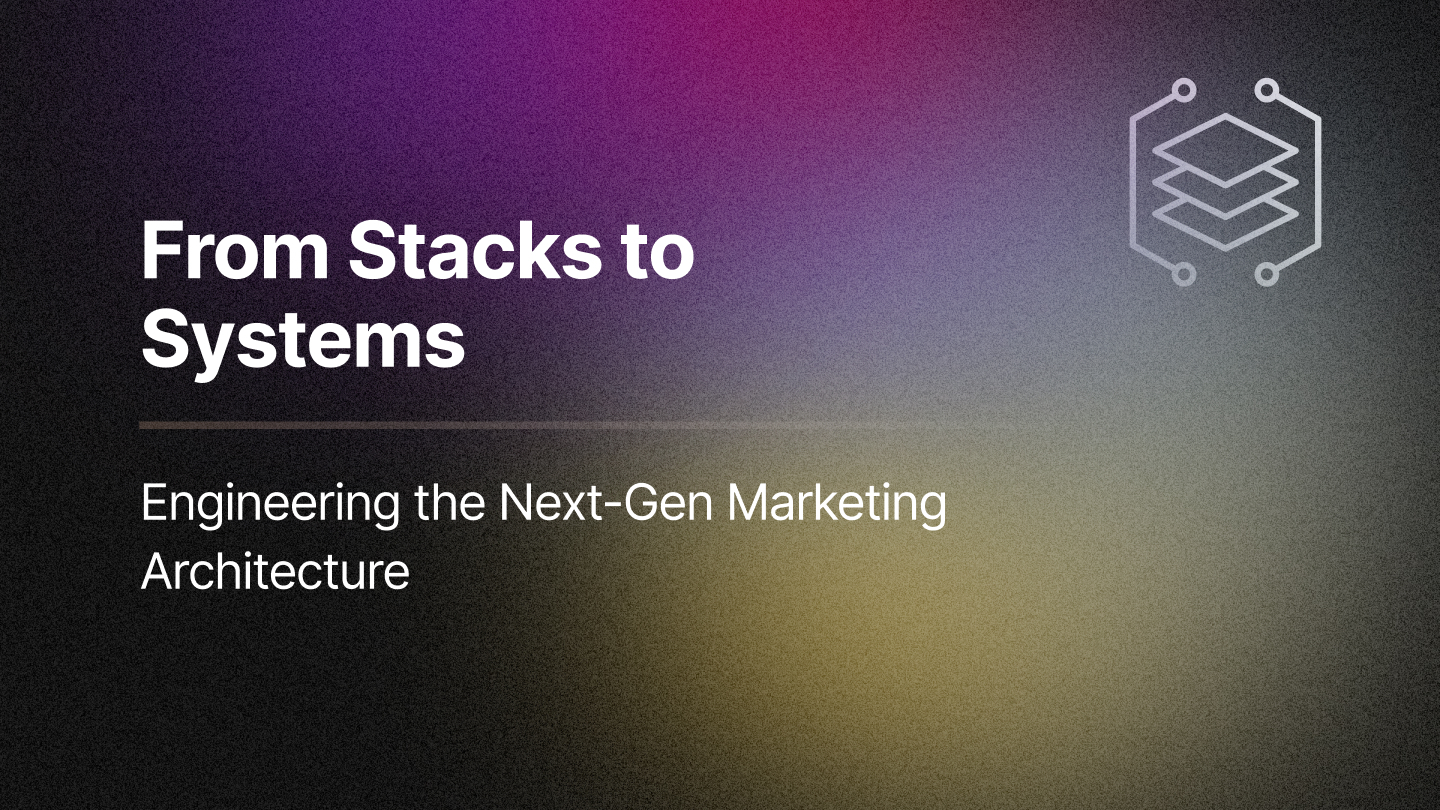Attribution in B2B marketing has long been serving as the method for assigning credit to different marketing activities in the customer journey. But there's a growing sentiment in the industry: traditional attribution is no longer effective. It’s become more of a hindrance than a help, limiting marketing effectiveness, exacerbating sales and marketing misalignment, and failing to provide actionable insights.
In this post, part of our ongoing blog series on "The Future of B2B Attribution", we’ll break down why traditional attribution methods are falling short and why businesses need to adopt a more advanced, actionable approach to drive success.
Widespread Distrust in Attribution Methodologies
One of the most pressing issues with traditional attribution is the distrust it creates within teams. Rather than being seen as a valuable tool for decision-making, many view it as a mechanism to justify past actions. This perception diminishes its strategic value, limiting how companies can use it to improve their marketing and sales efforts.
Marketing leaders are constantly left asking, does this data actually help me? In many cases, it doesn’t. The attribution models often present an incomplete view, and in some instances, they can even create more confusion than clarity.
Methodological Limitations of Traditional Attribution
Traditional attribution models are constrained by both methodological and practical challenges, making it difficult for marketing teams to capture the full picture of their efforts. Here are the key limitations that prevent these models from delivering reliable and actionable insights:
- Incomplete Data Capture: Traditional models often fail to capture the complete set of data necessary to understand the full buyer journey. This results in gaps in analysis, leading to less accurate conclusions and missed opportunities for optimization.
- Focus on Marketing Campaigns Only: These models typically isolate marketing efforts, ignoring the critical overlap with SDR/BDR and AE activities. This narrow focus prevents a holistic view of how cross-team efforts contribute to conversions, underestimating the overall impact.
- Lack of Synergy Measurement: Traditional models are not equipped to capture the synergies between marketing and sales teams. By overlooking the combined impact of these integrated efforts, the true value of collaborative campaigns is diminished.
- Inability to Adapt to Hybrid GTM Motions: As go-to-market strategies become more complex, traditional attribution struggles to adapt. These models are often too rigid to handle the combination of diverse sales and marketing tactics, limiting their effectiveness in dynamic environments.
- Over-Simplification in Rules-Based Attribution: Relying on rules-based approaches fails to account for the complexity of modern buyer journeys, which include both online and offline interactions. These simplistic models often overlook the nuanced behaviors that influence buying decisions.
Attribution Wars: Misalignment Between Sales and Marketing
Traditional attribution often fuels conflicts between sales and marketing teams, resulting in what we call "Attribution Wars." These are internal disputes about who gets credit for conversions—sales or marketing?
Instead of working together to optimize results, these teams become adversaries, debating over which activities truly contributed to revenue. This misalignment not only causes friction but also takes attention away from what really matters: driving better business outcomes.
Lack of Actionability
Even if traditional attribution models do provide some level of insight, they rarely offer clear next steps. After receiving attribution data, marketing teams are often left scratching their heads, wondering what to do with it. Without actionable insights, attribution data is just another report, making it difficult to reallocate marketing spend or refine strategies in meaningful ways.
Marketing professionals need more than just numbers; they need guidance. They need to know what to tweak, where to invest, and how to improve their return on investment (ROI). Traditional attribution methods simply don’t deliver that level of detail.
A More Robust Approach Is Needed for B2B Attribution
As the complexity of B2B marketing continues to evolve, so too must the tools and strategies used to measure its impact. Traditional attribution models are built on outdated assumptions and narrow focus areas that do not reflect the hybrid nature of today’s sales and marketing ecosystems.
At RevSure, we are developing a new approach to attribution that focuses on bridging the gap between sales and marketing while delivering truly actionable insights. Our advanced attribution framework goes beyond assigning credit—it empowers teams to make data-driven decisions that can improve their performance across the entire funnel.
What’s Next?
As part of our series on "The Future of B2B Attribution", we’ll be diving deeper into the specific limitations of traditional attribution and how businesses can adopt modern methods to overcome these challenges. From exploring how attribution wars can be avoided to understanding the synergies across different teams, we’ll provide insights that help marketing leaders transform their attribution efforts.
Stay tuned for the next blog in our series, where we’ll discuss the limitations of rules-based attribution methods and how to adapt attribution models to modern marketing environments.
And if you’re ready to learn more now, be sure to download our ebook on "The Future of B2B Attribution" for a comprehensive look at how you can start transforming your attribution strategy today.
Related Blogs








